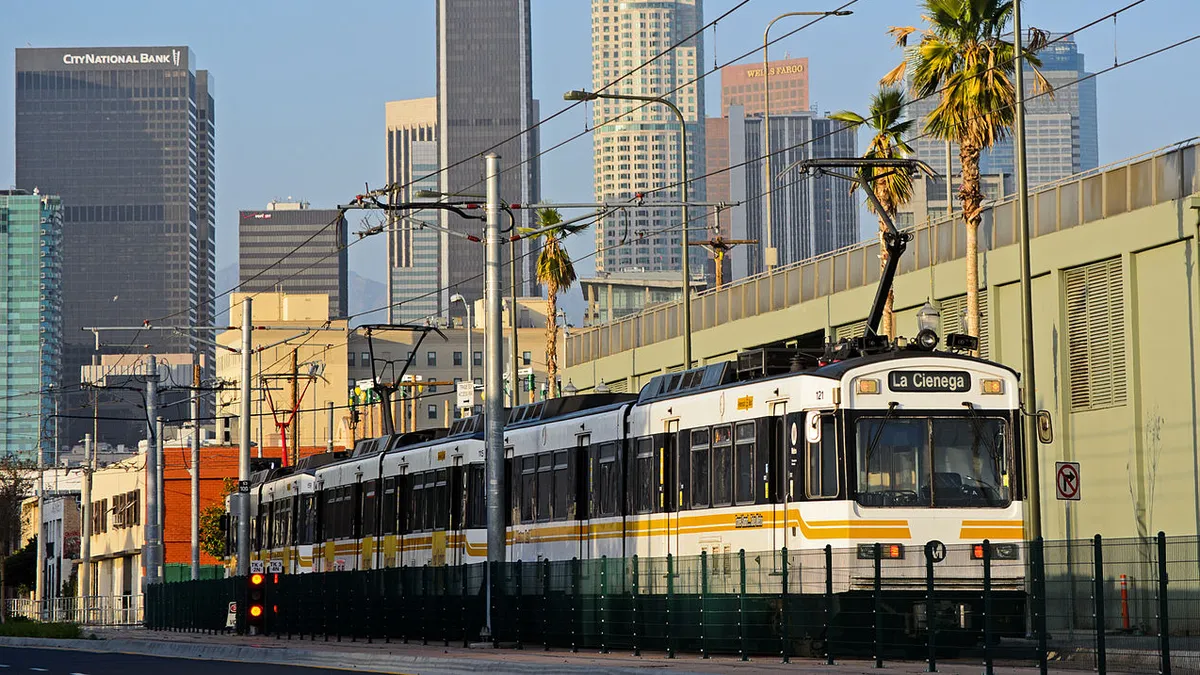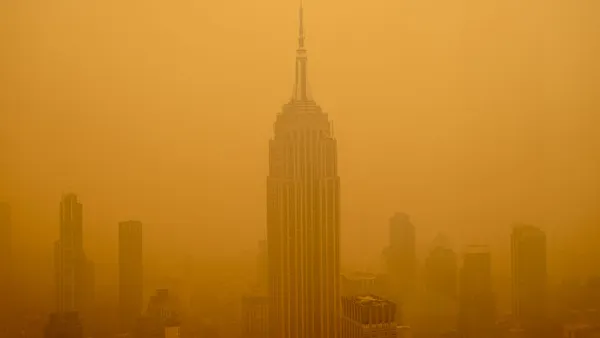Dive Brief:
- Los Angeles launched Cool Streets LA, a program to address the effects of climate change by implementing measures to help lower temperature and add shade in the city's hottest and most vulnerable neighborhoods.
- The program will pilot 10 cool neighborhood projects in vulnerable communities by 2025. Cooling measures include planting trees, installing cool pavement, building bus benches with shade structures, expanding cool roofs, providing hydration stations and offering energy efficiency rebates to businesses.
- The project was unveiled in South LA at the first location where cooling measures will be implemented. The other nine locations have yet to be determined, but a Mayor's Office spokesperson told Smart Cities Dive that in addition to focusing on the most vulnerable, heat-stricken communities, the program also will focus on corridors where citizens are dependent on transit.
Dive Insight:
The city chose the initial South LA location by performing an analysis that relied heavily on The Trust for Public Land's Climate Smart Cities mapping tool.
The interactive tool uses existing national and local data along with community priorities to identify places where green infrastructure strategies could improve communities and boost their resilience. Los Angeles planners primarily used the tool's "cool" and "equity" categories to influence their decisions.
Cool Streets LA will help to achieve goals in the city's Green New Deal: to plant 90,000 trees by 2021 and increase tree canopy 50% by 2028 in the greatest need areas. Also contributing to those goals is Garcetti's appointment of Rachel Malarich as Los Angeles' first city forest officer.
This summer, Malarich told Smart Cities Dive that although planting 90,000 trees in three years seems like a lofty goal, there are a lot of existing resources and partnerships working toward the same goal that can be unified under these new efforts to achieve the desired result.
The cool roofs that will be installed through the initiative will involve applying a material onto roofs that will reflect sunlight, as opposed to the often used black or dark roofs that absorb light and heat. That helps to lower the temperature of the building and the surrounding area, as well as to lower energy costs for citizens and businesses.
Starting January 1, all new roofs constructed in the city must be cool roofs, as laid out in the Los Angeles Green New Deal. Other cities such as Denver also implemented cool roof requirements. Cool roofs are shown to be an effective way to mitigate the urban heat island effect and reduce an area's temperature by several degrees.
A new report from CDP indicates that many global cities report already experiencing short-term effects from climate change. However, few have taken adequate actions to address the effects and boost communities' resilience. Those that have taken action primarily implemented policies, but the report states that local governments need to commit to real changes as well, such as with infrastructure.
Cool Streets LA is an example of a city taking concrete measures to tackle the effects of climate change, boost resilience and improve citizens' lives.












